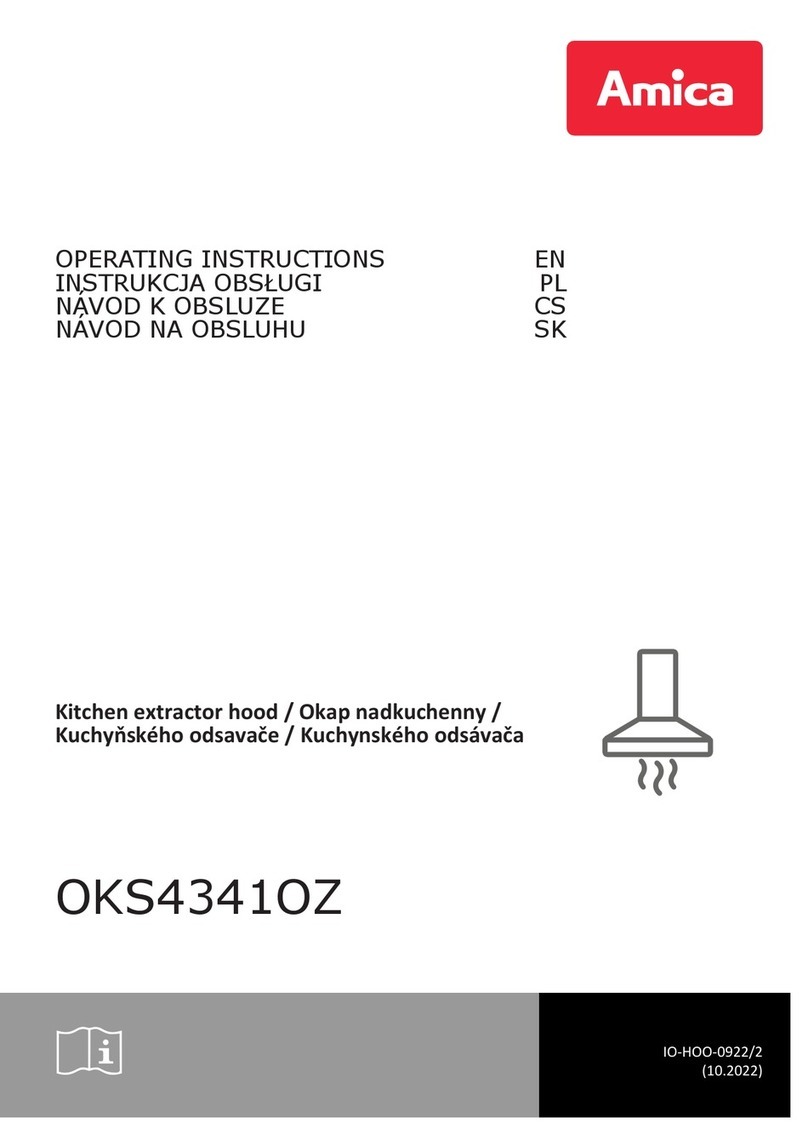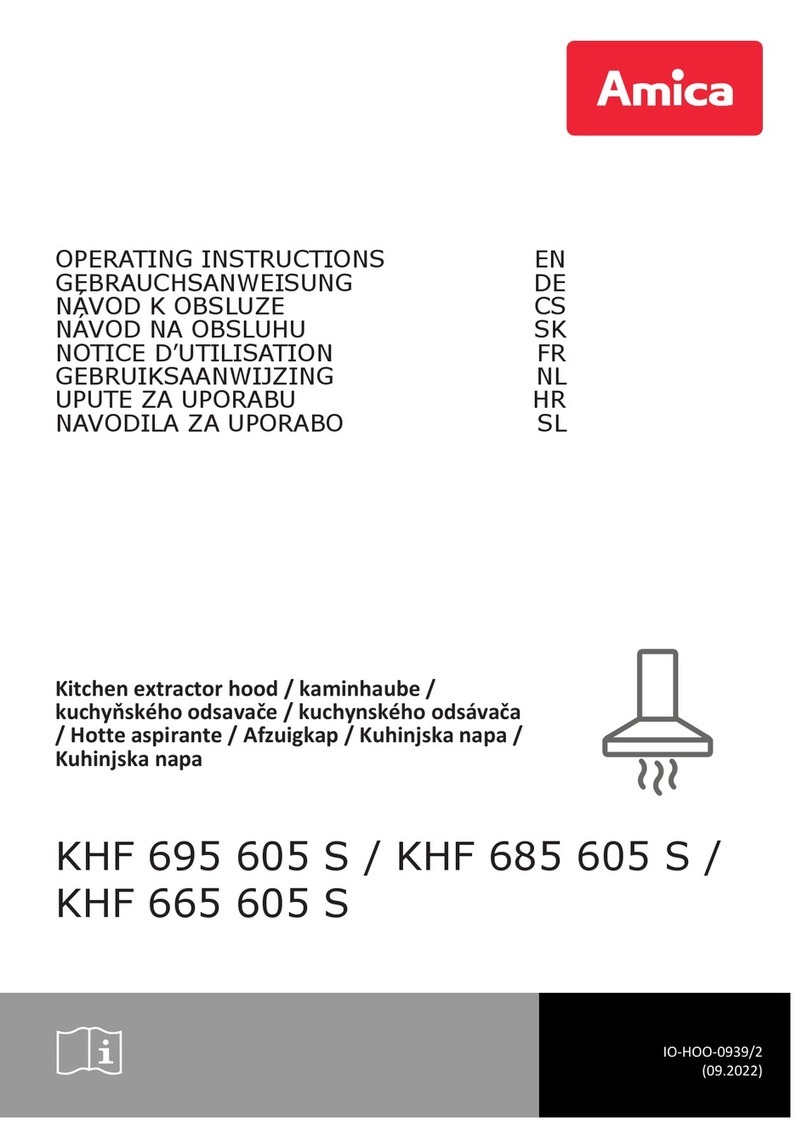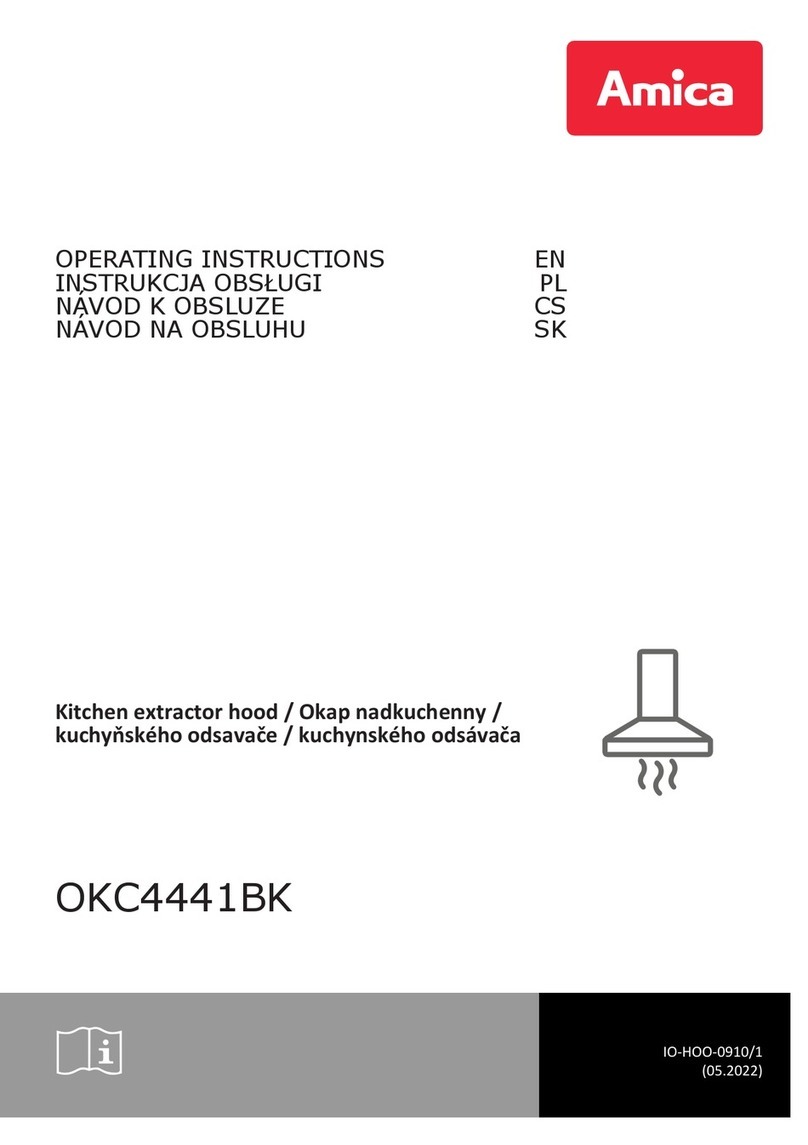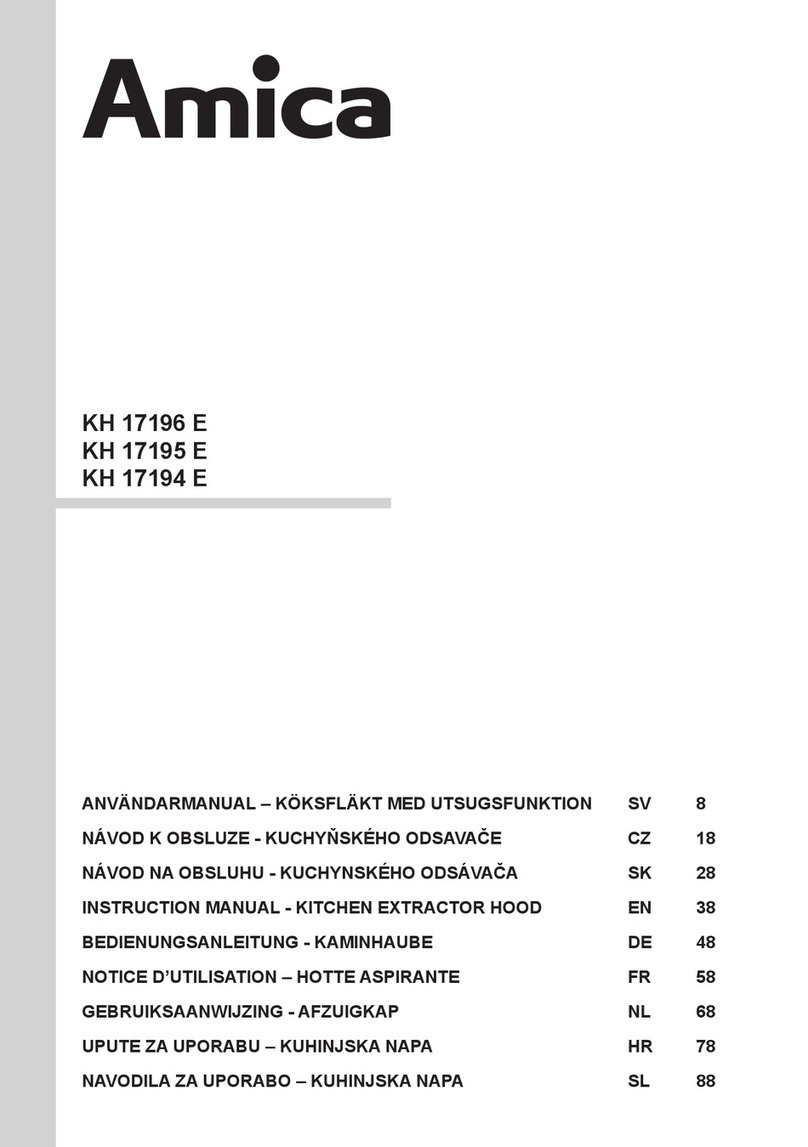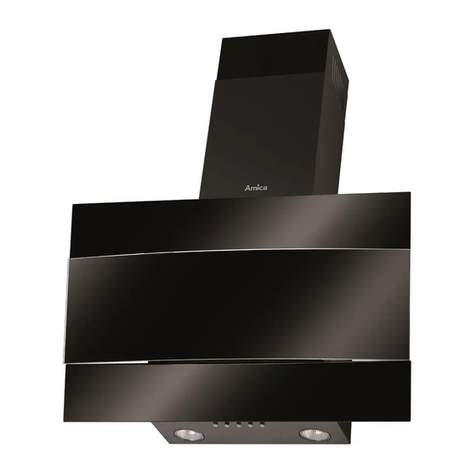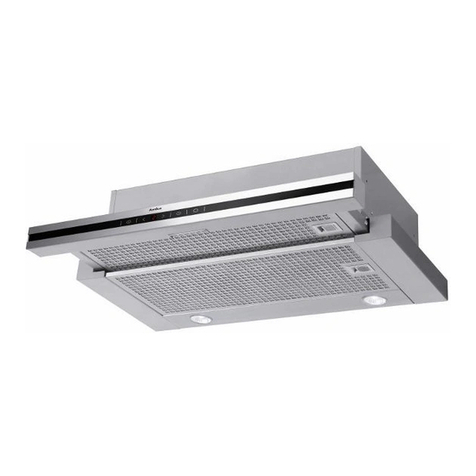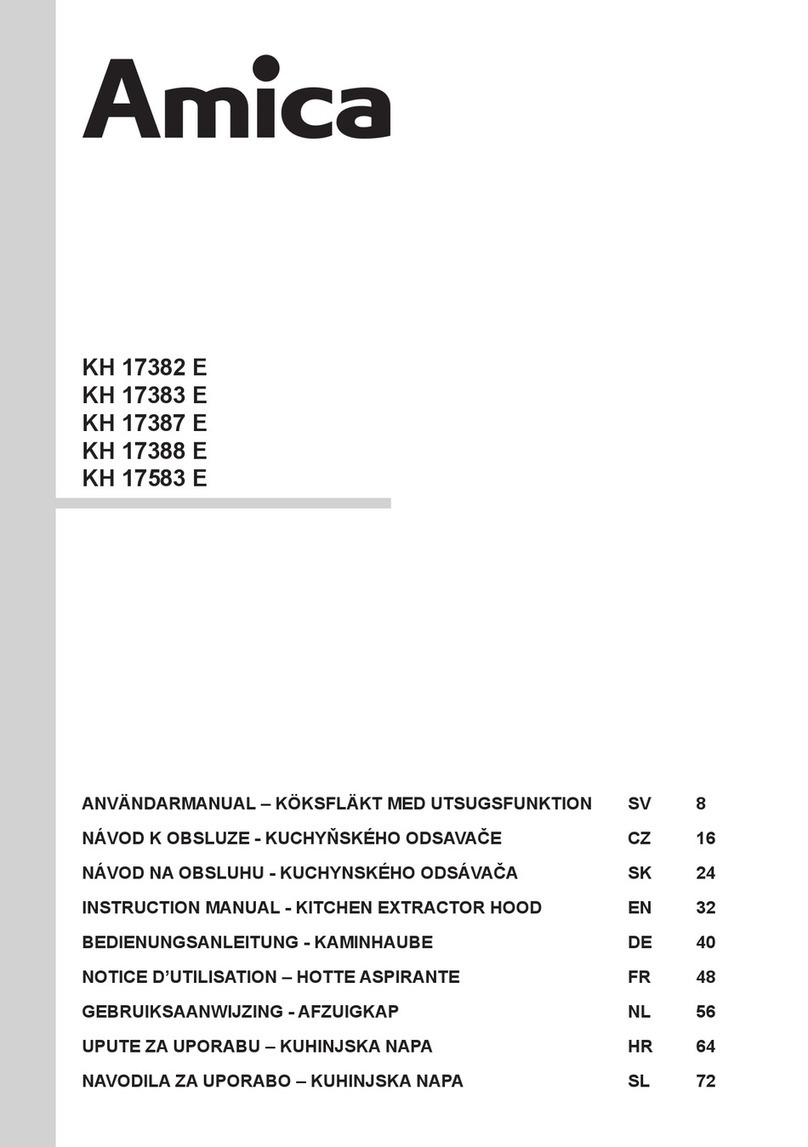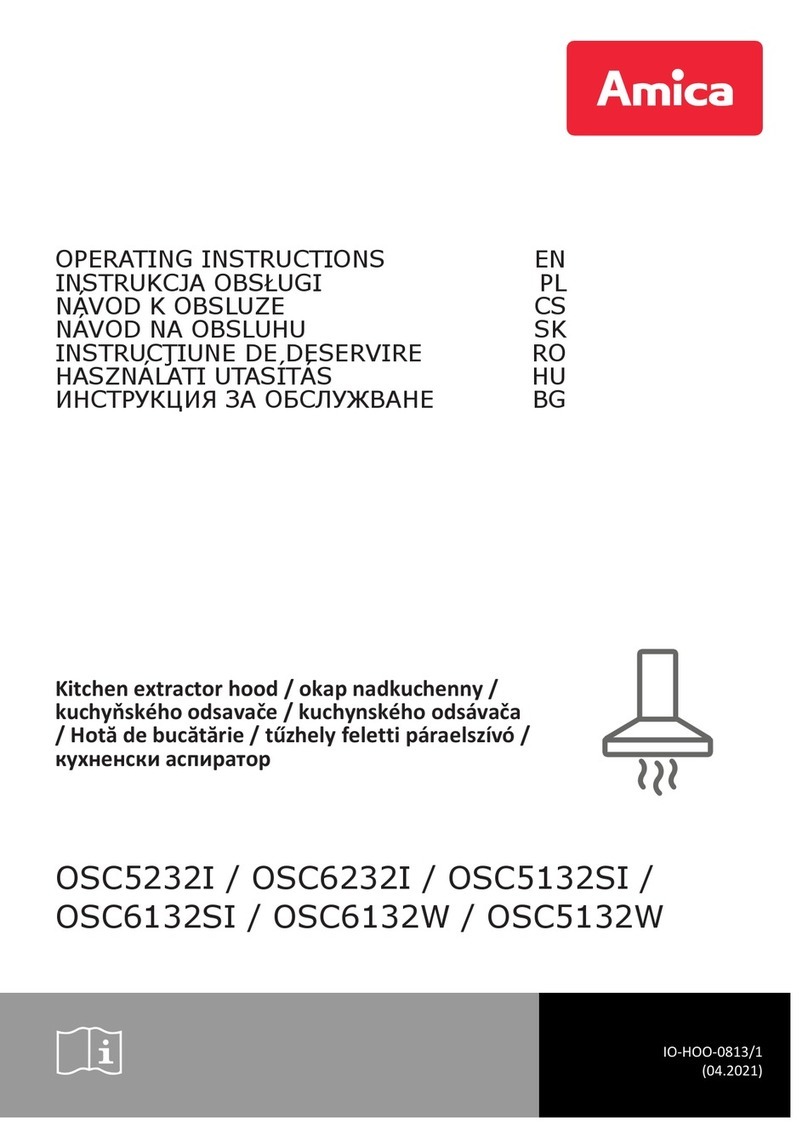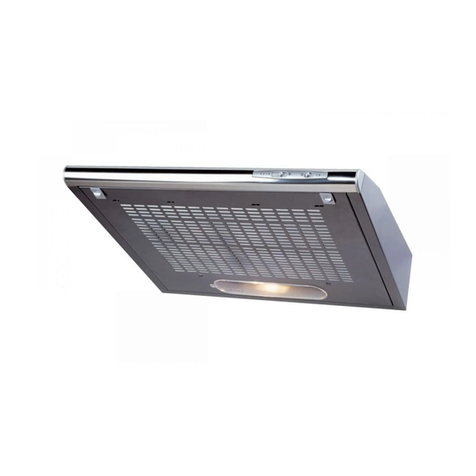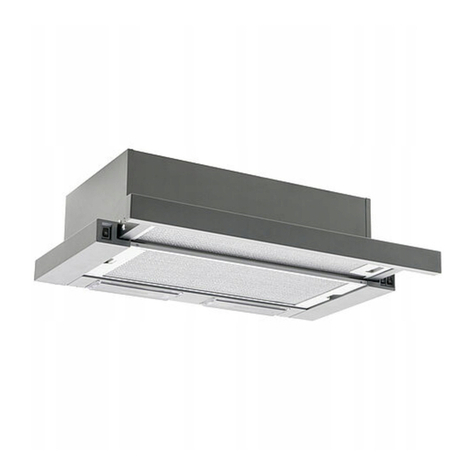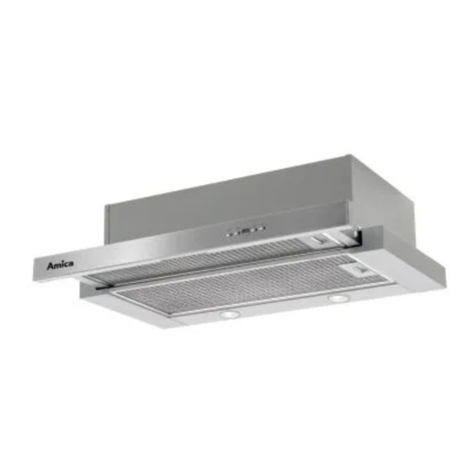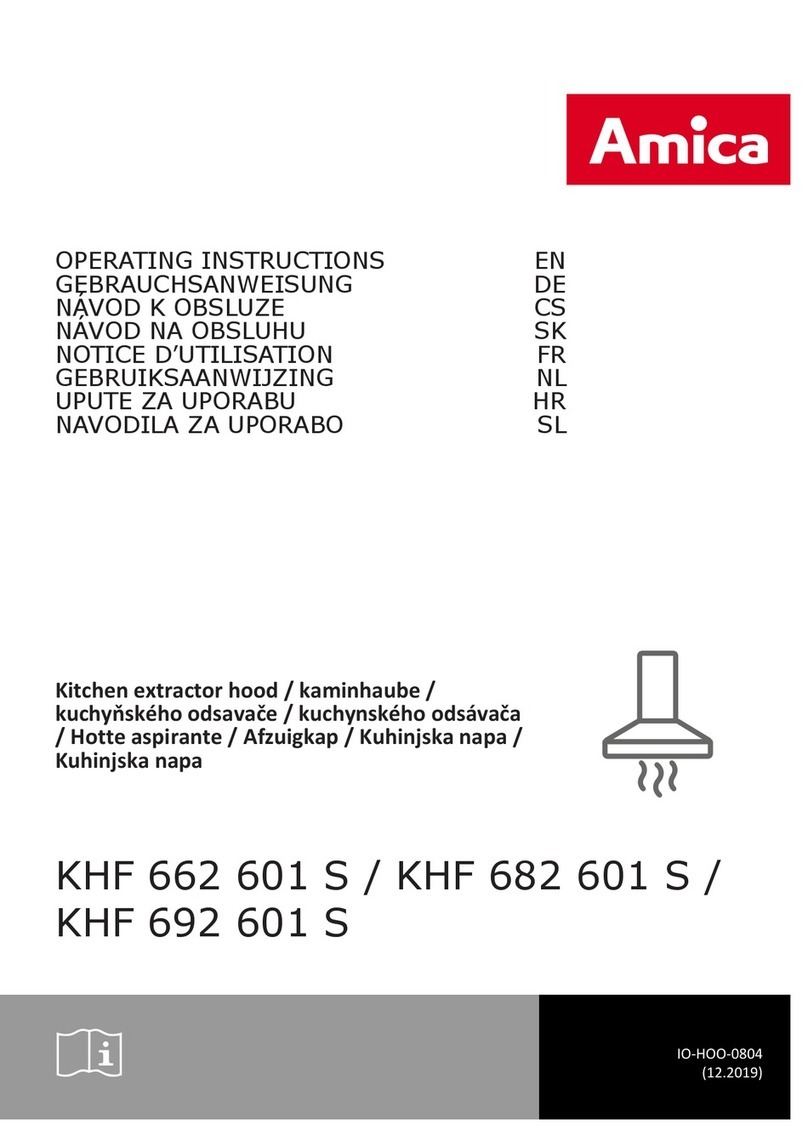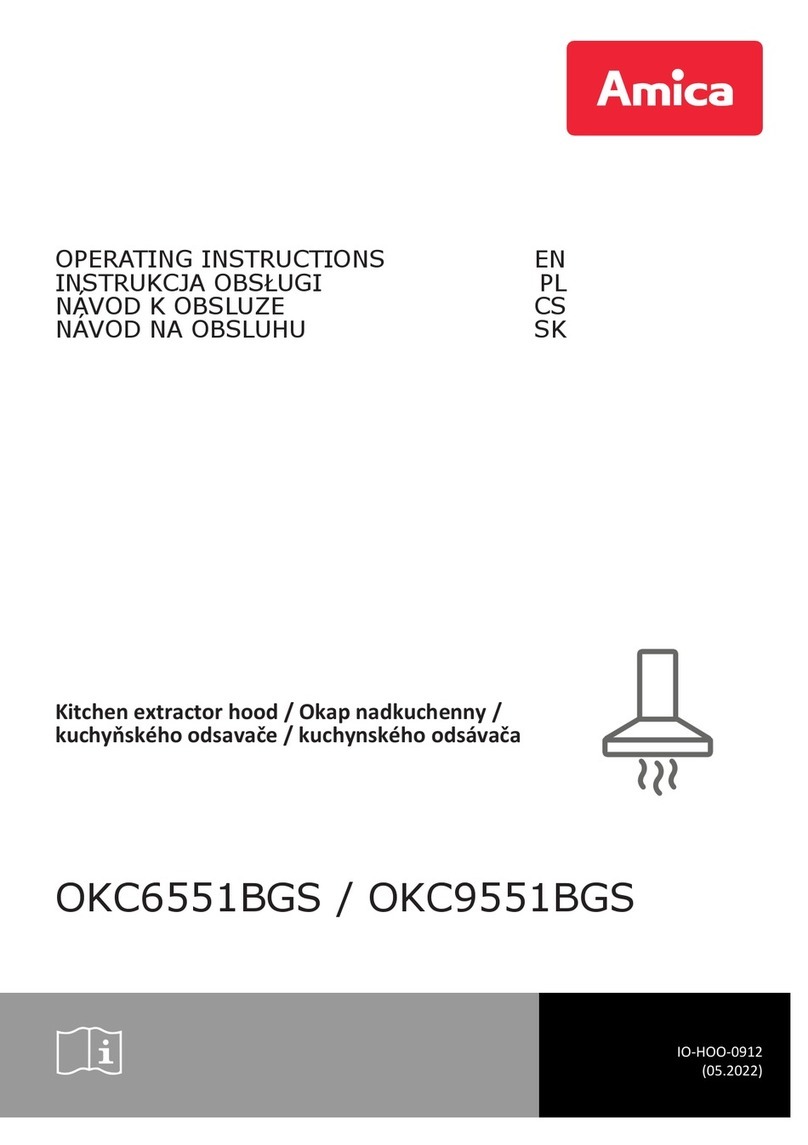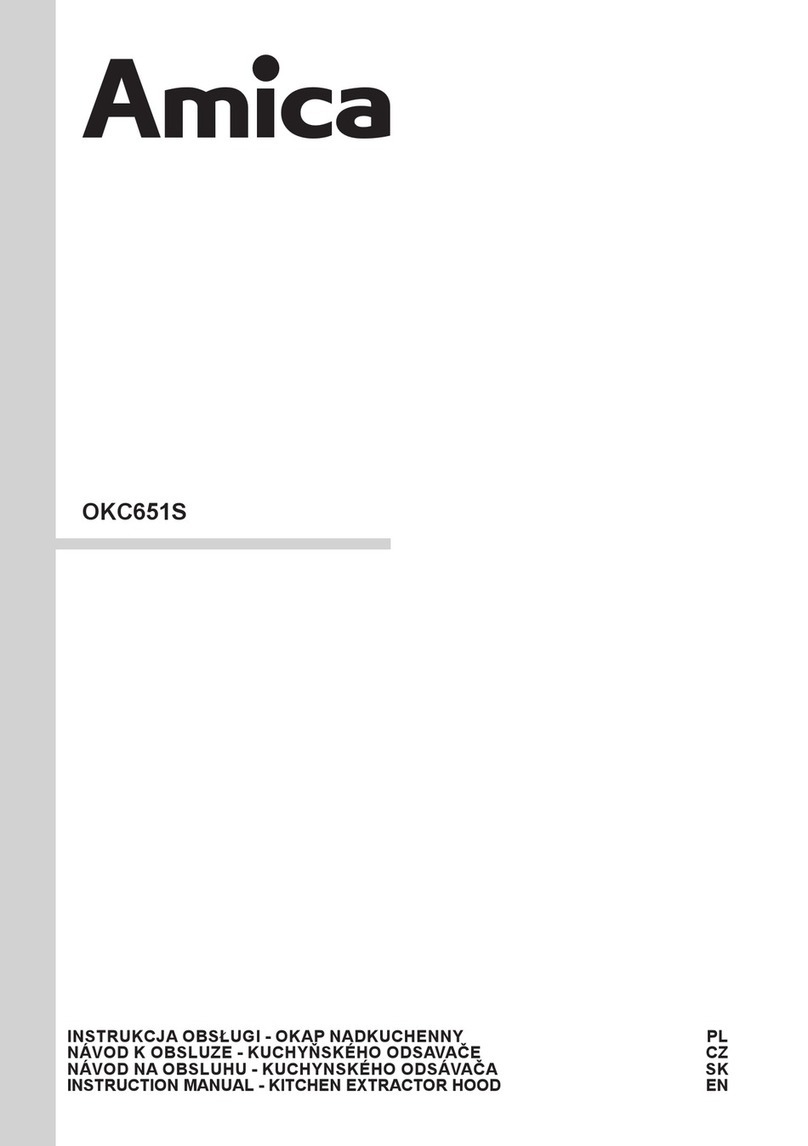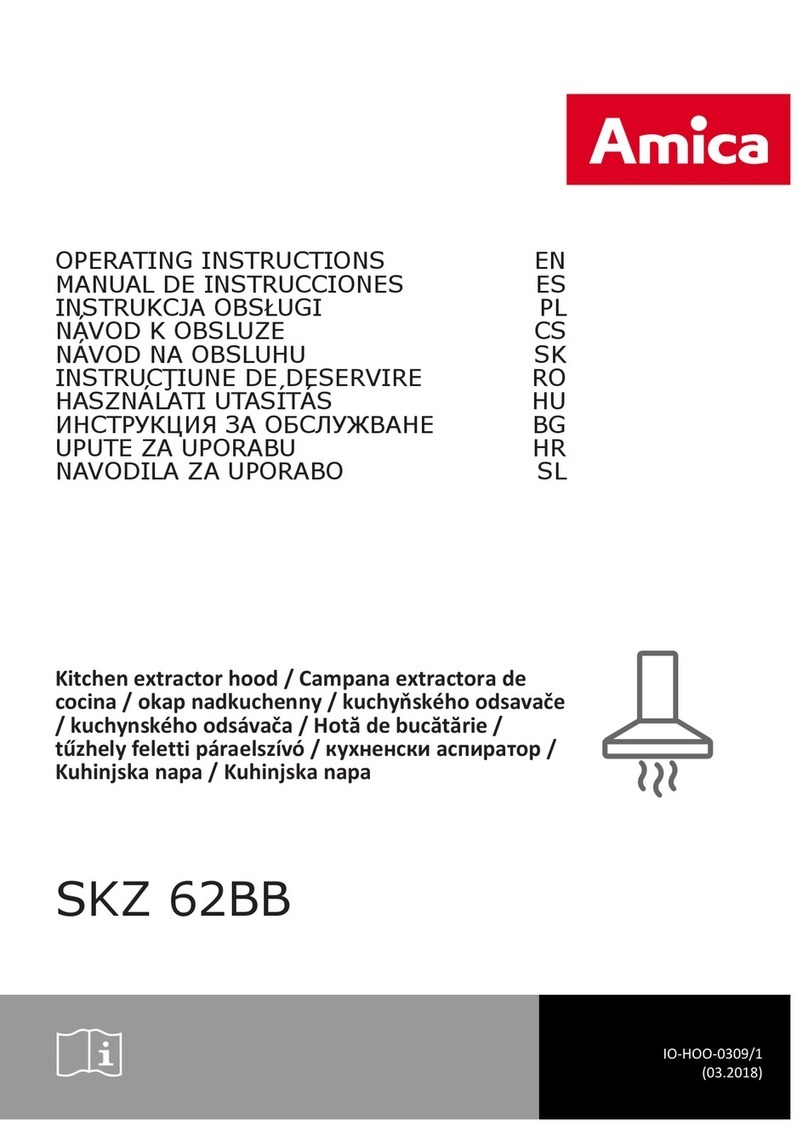5
INSTALLATION
CONNECTING TO THE POWER NETWORK AND
OPERATION CHECK
After connecting the device to the power supply
network (in accordance with the requirements de-
ned above) it is necessary to check operation of
the motor and lighting of the hood.
SETTING THE OPERATION MODE OF THE
KITCHEN EXTRACTOR HOOD
Setting the air extractor mode of operation of
the hood
In the extractor mode air is discharged to the out-
side by a special conduit. In that setting any carbon
lters shall be removed. The hood should be con-
nected to the opening discharging air to the outside
by means of a rigid or exible conduit of
120 mm diameter, which should be purchased in a
shop selling installation materials.
A qualied installer should be commissioned to in-
stall the connection.
Setting the odour absorber mode of operation
of the hood
In this option ltered air returns to the room through
openings in the front of the hood.
In this setting it is necessary to install the carbon
lter.
Fan speeds
The lowest and medium speeds should be used
under normal conditions and with low concentration
of fumes. The maximum speed should be used in
case of high concentration of kitchen fumes, e.g.
during frying or grilling.
Elements of the hood (Fig. 2):
1. Cooker hood body Aincluding glass, lights, fan
assembly and a decorative bottom masking
frame B,
2. Additional decorative top masking frame C,
3. Air guide F,
4. Top masking frame bracket,
5. A set of wall plugs.
In order to install the cooker hood, perform the
following:
1. Mark the positioning of the cooker hood mount-
ing holes on a paper template.
2. Mark the span of the holes on the wall taking
into account the minimum distance between
cooker hood and the hob’s surface (Fig. 1)
3. Drill holes in the wall using a drill bit with a
diameter equal to that of the wall plugs, insert
the plugs and screw in the screws (Fig. 3 items
Gand H).
4. Suspend cooker hood body (Fig 2. item A)
5. Connect the cooker hood to the ventilation
duct.
6. Connect the cooker hood to the electricity
mains.
7. Install the top masking frame bracket (Fig. 2
item E) at a suitable height.
8. Install the telescopic masking frames (Fig. 2
item Band C)
Install the cooker hood
a) Draw a vertical line on the wall to mark the cen-
tre of the hob/cooker,
b) Hold the prepared paper template against the
wall and arrange it symmetrically with the cen-
tre line, keeping a distance of at least 980 mm
between the holes and the hob. Holding it level,
mark the spacing of the mounting holes on the
wall,
c) Drill the holes marked on the wall using a drill
bit with a diameter equal to that of the wall plugs
supplied (Fig. 3 item Gand H), then hammer
the plugs in and screw in the screws into the
wall,
d) If the cooker hood will operate in extraction
mode, install the appropriate air outlet leading
to a ventilation duct,
e) If the cooker hood will operate in recirculation
mode, then together with top bracket (Fig. 2
item E) install air guide (Fig. 2 item F), which
will direct air ltered by the charcoal lter back
to the kitchen through the lateral outlets in the
top masking frame (Fig. 2 item C),
f) Install the top masking frame bracket (Fig. 2
item E) at a suitable height.
g) Install both decorative masking frames onto the
hanging cooker hood (Fig. 2 items Band C)
and position them as required,
h) Using screws, x the top masking frame (Fig. 2
item C) to the top bracket (Fig. 2 item E)
i) Connect the cooker hood to the electricity
mains.
